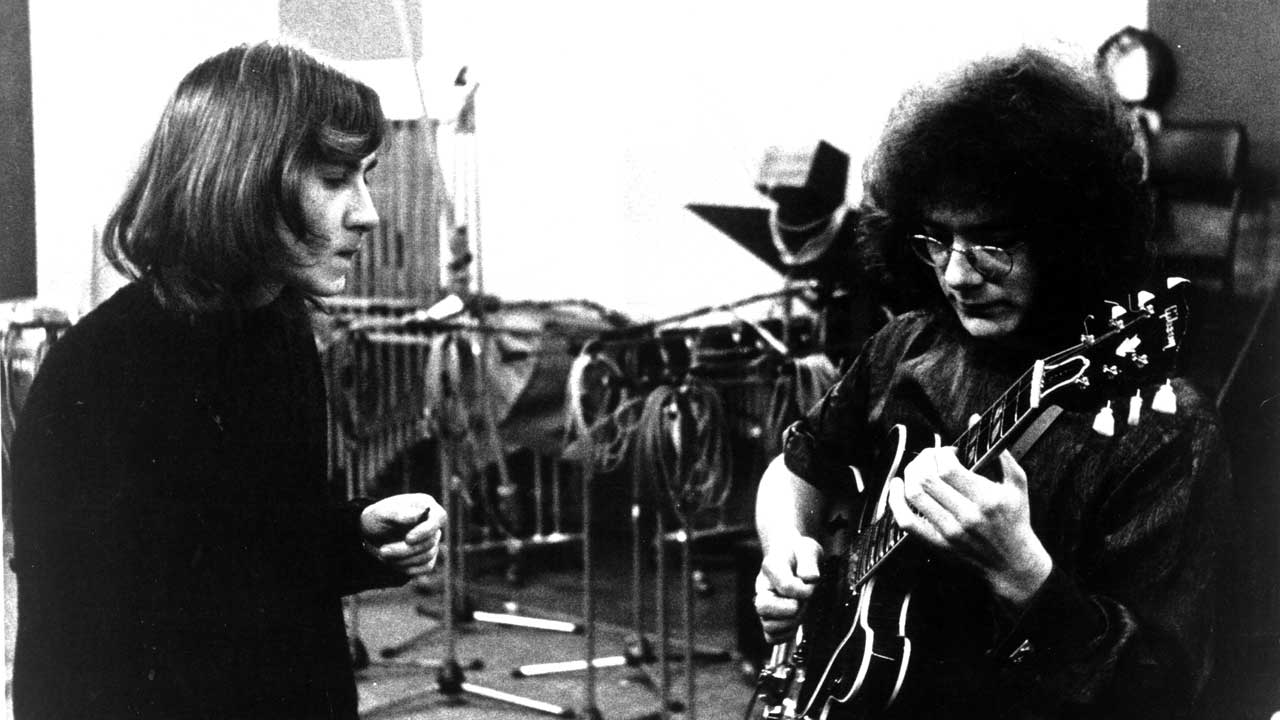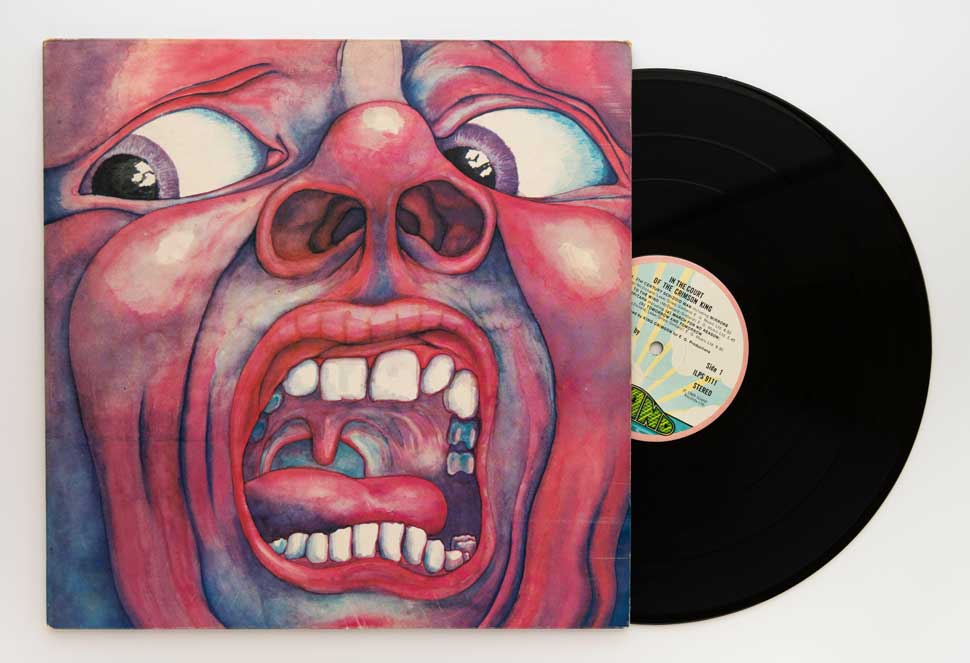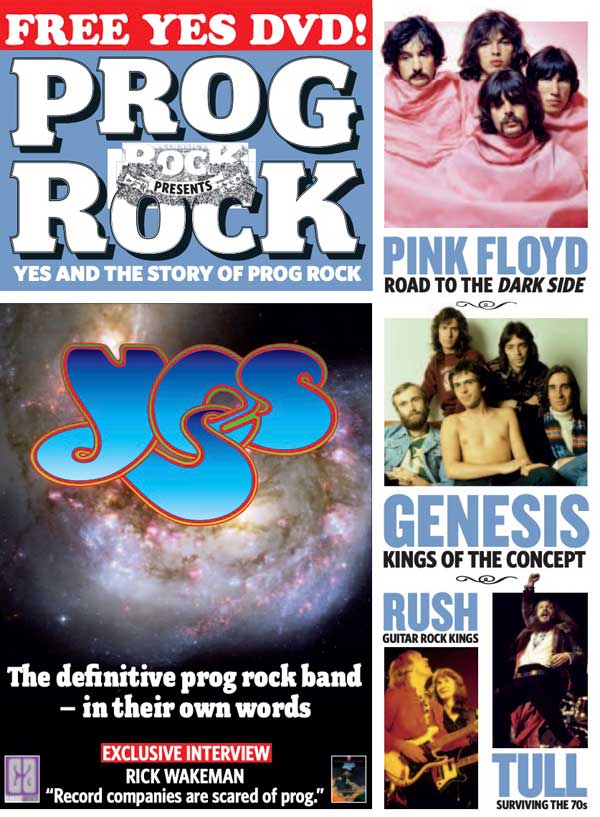"I remember listening back to that and thinking: What the hell is this?!": Behind the scenes at the recording of King Crimson's trailblazing In The Court Of The Crimson King
Tales of the first true progressive rock album, from two of the men who made it

It was the first true progressive rock album, from one of the UK’s most cutting-edge bands of the era. In 2007 we talked exclusively to members of the original 1969 line-up of about the making of the ground-breaking In The Court Of The Crimson King: An Observation By King Crimson.
In the middle years of the 60s the big rock talents – such as The Beatles, The Rolling Stones, The Beach Boys, Bob Dylan – had dominated the album chart, passing the top spot between them like members of a private club. But as the Swinging 60s moved through its autumn years and neared a new millennium, rock music was changing, coming of age, and entering a Golden Age that would shimmer with the dazzling luminescence of unprecedented creativity and diversity.
The year 1969 began with The Beatles in their familiar position at the top of the chart with The Beatles (aka the White Album), and US troops still fighting a bloody battle in Vietnam. Rock’s old guard was also coming under fire. In April the first album from a new band called Led Zeppelin thundered into the chart. A month later Jimi Hendrix blazed into the rock firmament like a fiery comet with Are You Experienced. Cream, the first ever supergroup, were about to throw down the psychedelic rock gauntlet in the shape of Disraeli Gears.
In mid-July 1969 a new British band called King Crimson, just signed to Island Records, began recording their debut album, just weeks after playing their first official gig on April 9 and days after supporting The Rolling Stones in front of a crowd of half a million in Hyde Park on July 5.
A mere 15 days later they had finished recording a remarkable, ground-breaking album that was sweepingly original, musicianly, creative, expansive; a true rock classic that many people consider to be the first true progressive rock album.
When it was released, The Who’s Pete Townshend called King Crimson’s In The Court Of The Crimson King: An Observation By King Crimson (to give it its full title) “an uncanny masterpiece”. And it was.

To record their debut, King Crimson had been teamed up with producer Tony Clarke, who had worked with the Moody Blues, including on their massive hit Nights In White Satin, and originally set up at Morgan studios in north-west London.
Sign up below to get the latest from Classic Rock, plus exclusive special offers, direct to your inbox!
After just a week, however, it was clear to the band that they and Clarke were not singing from the same songbook, and that the partnership was never going to give them the space to fully express and indulge themselves and follow their vision. It was also decided to move operations to Wessex studios which, situated in an old church, had a bigger natural sound. It’s where everything on the album was recorded.
With Clarke out of the picture, it was decided that the band would produce the album themselves – something that was highly unusual for a first album by a new band. Given the technical capabilities of the band, though, producing themselves turned out not to be that difficult, according to the band’s lyricist and co-producer Peter Sinfield.
“We had these fantastic engineers at Wessex, who’ve never really had the plaudits they deserve,” he points out. “And it was a great studio, with lots of valve mics, which make a difference. It was all done on eight-track, so there was a lot of editing because it was a very fussy band.
“It’s such a blur, because it was so fast,” Sinfield now recalls of the mere days it took to record the album, looking back almost 40 years.
Crimson had rehearsed long and hard prior to entering the studio, and the songs’ structures had also been worked up while gigging intensively in the few months the band had been together. The songs they had, that is. A problem they would have to address at some point was that they had barely more than half-an-hour’s worth of music prepared. Live, they played a combination of originals and covers, but they were adamant that the album would be all their own work. The shortfall in material, however, didn’t seem to be cause for concern.
“We were all 24, 25, 26, and we’d all been around for quite a while,” Sinfield says, “so we had quite a lot of ideas and bits and pieces to fall back on when the day came that they were required.”
Plus they were all very capable musicians, each with with more than one string to their bow. None more so that Ian MacDonald, who had been in the army and learned horn arranging, and could play brass and woodwind instruments as well as guitar and piano.
“I remember when I first met him I thought I’d found Mozart,” Sinfield laughs. “He’s an unbelievable musician. Even to this day I don’t really believe that someone can play so many things so well. And the irony is that he only wanted to be Paul McCartney, really, and strum his guitar.”
With much bigger ideas than the budget and very limited time, there was no room for a meticulous piecing together to accommodate what the album might appear to be.
“We went in and essentially recorded the tracks live, and embellished them from there, taking advantage of the multi-tracking – although we only had eight tracks,” MacDonald recalls.
The recording was completed in 15 days of recording, between July 16 and August 15, with the band doing gigs between sessions. “We’d record and then go on the road for two or three days then go back to the studio. I’m surprised by the nonchalance that I see in the diary I kept. It was just so matter-of-fact.”
That the album was completed in 15 days is amazing. That its best-known track, frenetic opener 21st Century Schizoid Man, given its complexity and technical difficulty, was recorded in one take is nothing short of astonishing. But then none of the tracks took long, and everything came together with a speed and smoothness that belies the end result.
The only occasional spanner in the works was the then-new instrument the Mellotron, which went out of tune if the temperature varied.
The Beatles had been among the first bands to use the Mellotron, on Sgt Pepper, and The Moody Blues had used the instrument extensively. But King Crimson’s In The Court… seemed to be awash with Mellotron, to the extent that it was one of the signature sounds of the album.
“It appears to be awash with Mellotron, because two of the big, sweeping orchestral tracks – Epitaph and The Court Of The Crimson King – are,” Sinfield offers. “But used, we’d like to think, sensibly. We didn’t just plonk down handfuls of chords, we’d record each note and put it all together, and try to pretend it was a bit more like strings than it really was.”
“I didn’t want to record the Mellotron in the same way that the Moodies had done,” says Ian MacDonald, the man who played it on the record. “So the way we used it was more aggressive, more majestic. And one of the ways I did that was just to blast the Mellotron through a double stack of Marshalls and put a microphone about 20 feet away.”
Over the years, perhaps because guitarist Robert Fripp has been the only constant member of the band, it is often assumed that he was, right from the beginning, the musical genius at the heart of King Crimson and also the man very much in the driving seat. Sinfield, however, points to another member of the band as the one pulling the strings during the recording of the album.

“I think the driving force was Ian MacDonald, really,” he says. “Greg [Lake, bassist/vocalist] wasn’t really capable enough as a musician, or even as a writer. Not that he didn’t contribute anything at all, because obviously he did. Fripp was very steady and Robert-ish. Michael Giles [drums/percussion] always wanted to do it as difficult as possible and as jazzy as possible. Ian was the one who just wanted to do anything that we could possibly do within the scope and yet still have people listen to it. And I was the one floating around the outside knowing we should have an extraordinary cover and without the name on, and stuff like that.”

During the making of the album, did the band ever get the feeling that they were creating something that was a little bit special, and unlike anything else that had gone before?
MacDonald: “I don’t remember thinking anything like: ‘Wow! That’s great’ or whatever. Except maybe with …Schizoid Man. I remember listening back to that and thinking: ‘What the hell is this?!’
“We weren’t the type of band to slap each other on the back. We were very reserved in praising one another or ourselves. We just did it and went on to the next thing.”
Sinfield: “Maybe at the end. When it was all finished there was a sort of glow of satisfaction – and relief. There was a feeling of: ‘Gosh, we’ve done something and it sounds really rather good, and we’re quite proud of that bit, and that bit.’ By any standards, there are parts of that album that shine out. And I think it has a timelessness to it as well – which I can tell you by the royalty statements even today.”
Classic Rock’s production editor for the past 22 years, ‘resting’ bass player Paul has been writing for magazines and newspapers, mainly about music, since the mid-80s, contributing to titles including Q, The Times, Music Week, Prog, Billboard, Metal Hammer, Kerrang! and International Musician. He has also written questions for several BBC TV quiz shows. Of the many people he’s interviewed, his favourite interviewee is former Led Zep manager Peter Grant. If you ever want to talk the night away about Ginger Baker, in particular the sound of his drums (“That fourteen-inch Leedy snare, man!”, etc, etc), he’s your man.



